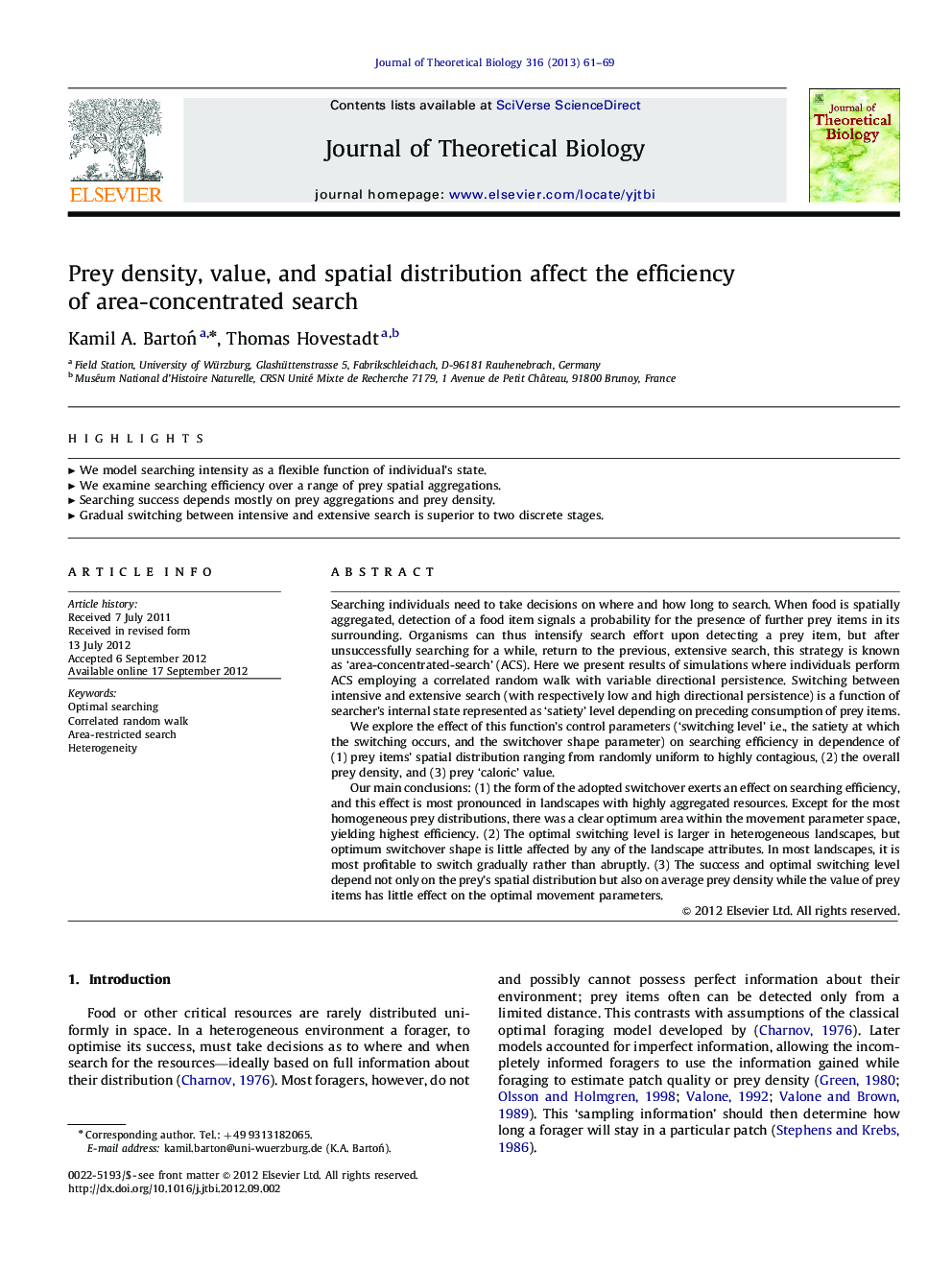| کد مقاله | کد نشریه | سال انتشار | مقاله انگلیسی | نسخه تمام متن |
|---|---|---|---|---|
| 4496572 | 1623894 | 2013 | 9 صفحه PDF | دانلود رایگان |

Searching individuals need to take decisions on where and how long to search. When food is spatially aggregated, detection of a food item signals a probability for the presence of further prey items in its surrounding. Organisms can thus intensify search effort upon detecting a prey item, but after unsuccessfully searching for a while, return to the previous, extensive search, this strategy is known as ‘area-concentrated-search’ (ACS). Here we present results of simulations where individuals perform ACS employing a correlated random walk with variable directional persistence. Switching between intensive and extensive search (with respectively low and high directional persistence) is a function of searcher's internal state represented as ‘satiety’ level depending on preceding consumption of prey items.We explore the effect of this function’s control parameters (‘switching level’ i.e., the satiety at which the switching occurs, and the switchover shape parameter) on searching efficiency in dependence of (1) prey items’ spatial distribution ranging from randomly uniform to highly contagious, (2) the overall prey density, and (3) prey ‘caloric’ value.Our main conclusions: (1) the form of the adopted switchover exerts an effect on searching efficiency, and this effect is most pronounced in landscapes with highly aggregated resources. Except for the most homogeneous prey distributions, there was a clear optimum area within the movement parameter space, yielding highest efficiency. (2) The optimal switching level is larger in heterogeneous landscapes, but optimum switchover shape is little affected by any of the landscape attributes. In most landscapes, it is most profitable to switch gradually rather than abruptly. (3) The success and optimal switching level depend not only on the prey's spatial distribution but also on average prey density while the value of prey items has little effect on the optimal movement parameters.
► We model searching intensity as a flexible function of individual's state.
► We examine searching efficiency over a range of prey spatial aggregations.
► Searching success depends mostly on prey aggregations and prey density.
► Gradual switching between intensive and extensive search is superior to two discrete stages.
Journal: Journal of Theoretical Biology - Volume 316, 7 January 2013, Pages 61–69